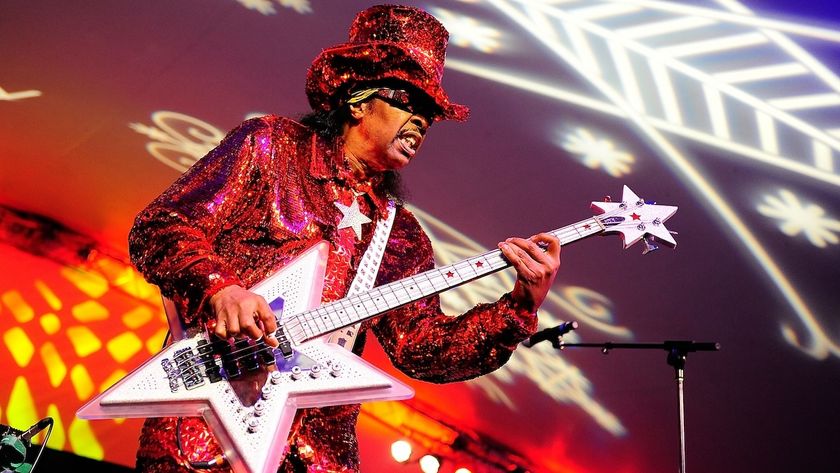An introduction to the fundamentals of classical guitar
Tempted to pick up classical guitar but intimidated by its lore? Classical pro Roxane Elfasci breaks down everything from its compositional tradition, style-specific playing practices and instrumental requirements

The world of the guitar is not one: it is multiple. Each style, whether it is rock, jazz, flamenco or folk, has its own uses and its own playing modes, but also its own instrument (amplified or dry guitars, cutaway or non-cutaway, half-body or quarter-body), and its own types of strings (nylon, carbon, metal).
As such, it can seem daunting taking those first few steps into the world of classical guitar, especially if it’s a world that’s wholly unfamiliar. Questions relating to playing styles you’re currently unaccustomed to, or reservations you may have about what instruments are up to the task, are all barriers that prevent many from testing the genre out for themselves.
So, what can we expect from the world of classical guitar? Here, we break down the main principles that make it unique, and pick apart everything from playing posture, instrument wood types and performance tradition.
A tradition of written music
As is often the case in classical music, a distinction is made between composers and performers. The transmission of works from one to the other is done through scores. The role of the performer is to make the listeners discover the work of a composer.
Composers and performers cannot exist without each other. Moreover, we only speak of the creation of a work when it is performed for the first time before an audience. Before this first performance, the work – even if it is composed, edited and published – is not yet created: it is not yet born.
Fernando Sor, Francisco Tárrega, Augustin Barrios and Roland Dyens were all guitarist composers, so they could afford to perform their music themselves. But composers such as Joaquin Rodrigo (who wrote the magnificent and famous Aranjuez Concerto), Manuel Maria Ponce or Tedesco wrote for the guitar without playing it, and thus entrusted their works to the care and work of the performers.
Classical guitarists have an immense repertoire of works to choose from, composed from the Renaissance to the present day. The personality of the performer will be reflected in their choice of pieces, but also in the way they play them.
Get The Pick Newsletter
All the latest guitar news, interviews, lessons, reviews, deals and more, direct to your inbox!
Specific ways of playing
To begin with, the classical guitar is played without a pick. Classical guitarists use the four fingers of the right hand (rarely the little finger because of its size) independently, which allows them greater virtuosity in arpeggios, as well as the dexterity necessary to play polyphonic melodies (ie, several voices at the same time).
The sound of a classical guitar is not modified or amplified. That's why classical guitarists take special care with their sound. They grow their fingernails on their right hand and polish them thoroughly in order to get the sound that best suits them. The nails also allow the guitarists to have a bigger sound volume, something referred to as "projection of the sound".
These right hand specificities allow certain very idiomatic modes of play, like the tremolo. One of the most famous works for classical guitar is entirely based on this technique: the Recuerdos de la Alhambra, composed by Francisco Tárrega.
Classical guitarists raise their left foot with a footrest and hold their guitar at an angle. This singular position allows the shoulders to be totally relaxed, and concentrates all the energy of the body in the hands in order to maximize ease and virtuosity.

A particular lutherie
Classical guitars are made of solid wood. The most essential part is the top – that is to say, the piece of wood that includes the rosette, and upon which the strings are fixed. It is the part that vibrates under the pressure of the strings, and it is therefore where the luthier's greatest attention is focused.
The top is either made of spruce or cedar. Spruce guitars are lighter in color and have a more precise and brilliant sound than cedar guitars, which are darker in color and have a warmer and rounder sound.
As with most instrumentalists, the bond between the guitarist and their guitar is very strong, with the guitar allowing the performer to express their sensitivity. For classical guitarists, there are different ranges of guitars: beginner classical guitars, which carry a price of anything between $150 and $500, and concert guitars, which can cost upwards of $5,000.
This cost is explained by the long and meticulous work of luthiery behind their creation (these guitars are entirely handmade), but also by the cost of the woods used for its manufacture.
- Roxane Elfasci's upcoming album Hommage à Debussy is out on September 17, and available to preorder now.








![[L-R] George Harrison, Aashish Khan and John Barham collaborate in the studio](https://cdn.mos.cms.futurecdn.net/VANJajEM56nLiJATg4P5Po-840-80.jpg)




